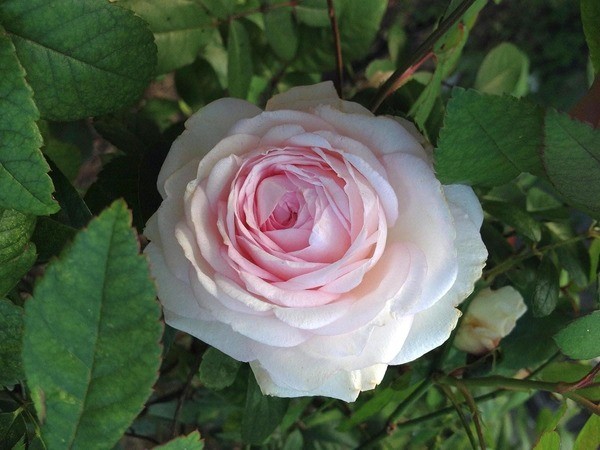Clotilde Soupert rose

Clotilde Soupert Rose: A Classic Polyantha Beauty
The Clotilde Soupert rose, bred by Soupert & Notting in Luxembourg in 1888, is a timeless favorite among rose enthusiasts. This exquisite Polyantha rose, also known as Madame Hardy du Thé, Madame Melon du Thé, and Madame Merlon du Thé, continues to captivate gardeners with its charming blooms and fragrance.
Characteristics of Clotilde Soupert Rose
- Name: Clotilde Soupert (Madame Hardy du Thé, Madame Melon du Thé, Madame Merlon du Thé)
- Bred by: Soupert & Notting (Luxembourg, 1888)
- Type: Polyantha
- Bloom Description:
- Size: Average diameter 1.5 inches
- Color: White with a rose-pink center and red shading
- Petal Count: Very double, cluster-flowered
- Bloom Form: Large, rounded, cabbage-like
- Fragrance: Moderate
- Foliage: Medium green, well-branched
- Growth Habit: Short, bushy, few or no prickles/thorns
- Height: Up to 32 inches (80 cm)
- Width: Up to 2 feet (60 cm)
- Blooming Pattern: Prolific, blooms in flushes throughout the season
- USDA Hardiness Zones: 5b through 9b
- Disease Susceptibility: Susceptible to mildew, blooms tend to ball in wet weather, prefers dry climates
Exquisite Blooms and Fragrance
Clotilde Soupert’s blooms are a sight to behold. The flowers are creamy-white with delicate touches of rose pink at the center and subtle red shading. Each bloom is double, forming large clusters resembling the classic cabbage-like roses. The moderate fragrance adds an extra layer of charm, making this rose a delightful addition to any garden.
Growth and Care
This Polyantha rose is known for its compact and bushy growth habit. It can reach a height of up to 32 inches and a width of up to 2 feet, making it an excellent choice for small gardens or borders. The medium green foliage is well-branched and nearly thornless, adding to its appeal.
Pruning and Maintenance
Clotilde Soupert requires regular pruning to maintain its shape and encourage healthy growth. In early spring, remove any dead or diseased wood and thin out crowded branches to improve air circulation. This rose prefers dry climates and can be susceptible to mildew, so ensuring good airflow and avoiding overhead watering can help mitigate these issues.
Ideal Uses
The Clotilde Soupert rose is versatile and can be used in various garden settings. Its compact size and abundant blooms make it perfect for borders, mixed plantings, or as a standalone specimen. The clusters of fragrant flowers are also ideal for cutting, allowing you to enjoy their beauty and scent indoors.
Planting and Soil Requirements
Plant Clotilde Soupert in a location that receives full sun for optimal growth. It thrives in well-drained soil with a pH range from slightly acidic to neutral. Regular watering is essential, but avoiding waterlogging the soil is vital to prevent root diseases.
Tribute to Classic Elegance
The Clotilde Soupert rose is a tribute to classic elegance with its beautifully shaped blooms and pleasant fragrance. Despite its susceptibility to mildew and tendency to ball in wet weather, this rose’s charm and prolific blooming pattern make it a beloved choice for gardeners.
The Clotilde Soupert rose, with its enchanting white and pink blooms and moderate fragrance, remains a classic favorite among rose lovers. Bred by Soupert & Notting, this Polyantha rose offers a delightful combination of beauty and resilience. Its compact size, abundant blooms, and versatile uses make it a standout choice for any garden. Whether used for borders, mixed plantings, or as a cut flower, Clotilde Soupert promises to bring timeless elegance and charm to your garden space.
